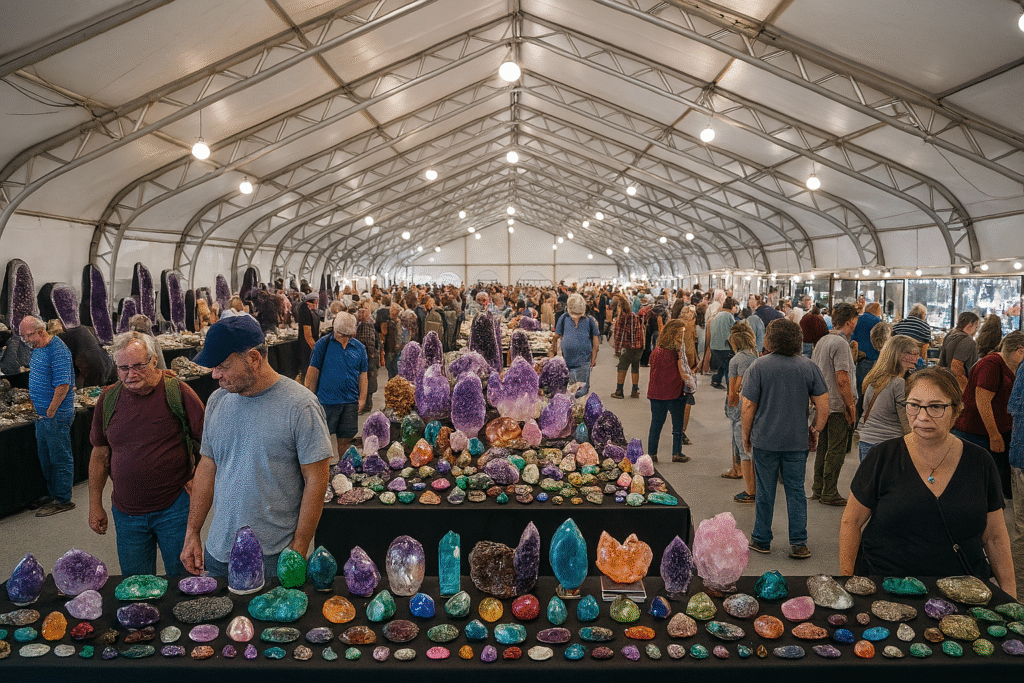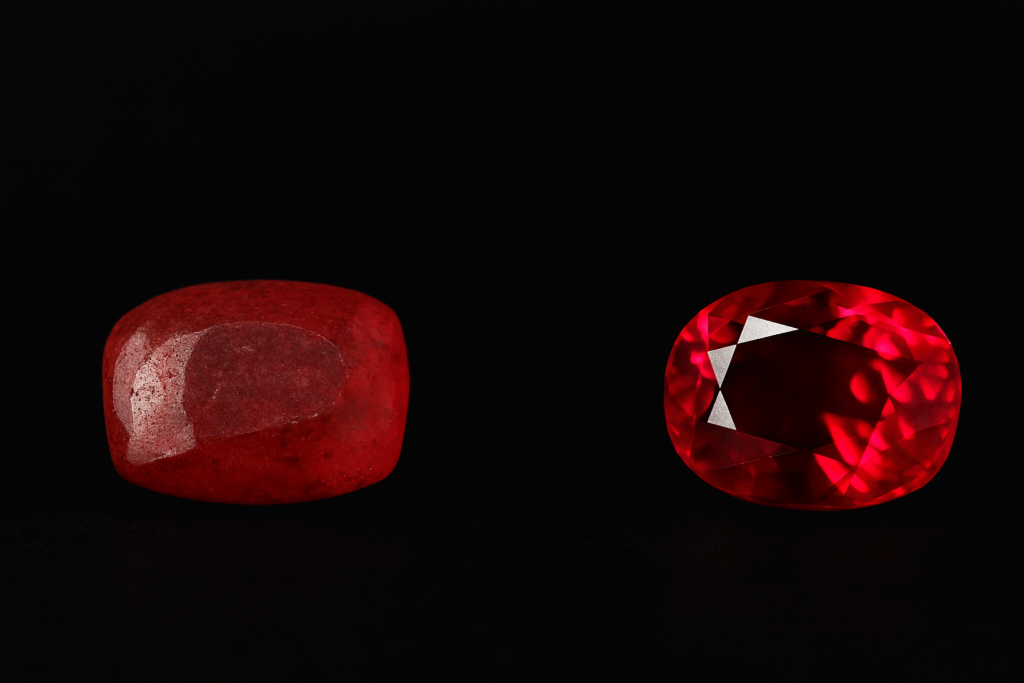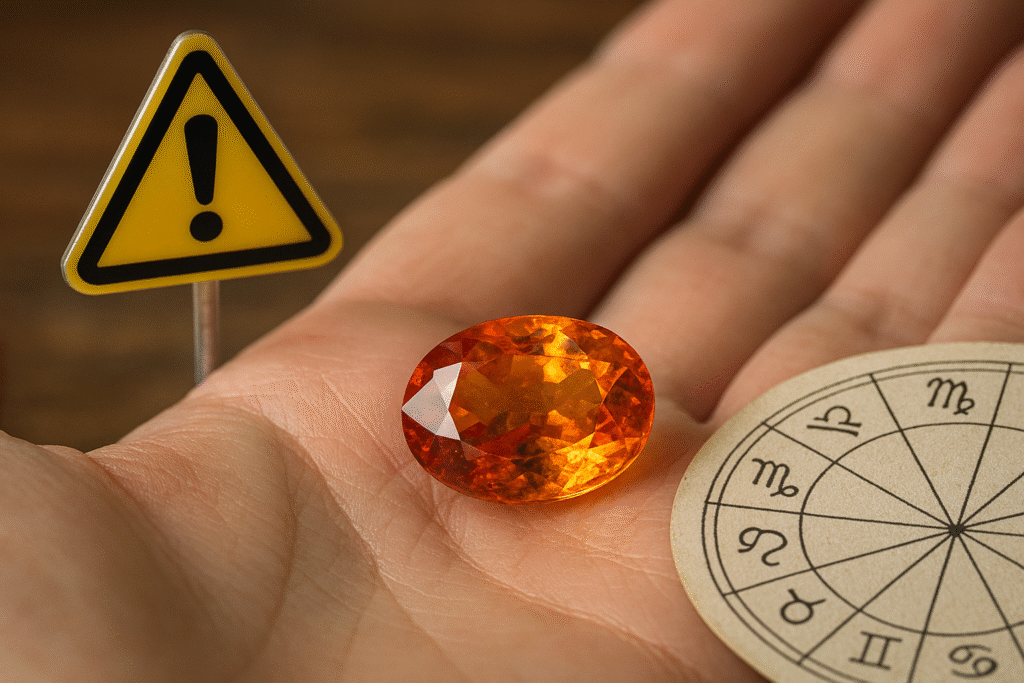The Tucson Gem Show 2025 is the world’s largest gem and mineral event. Each February, Tucson, Arizona welcomes more than 65,000 visitors from 40+ countries. Dealers, collectors, miners, and jewelry designers gather to showcase everything from rare diamonds to museum-grade fossils.
What Makes Tucson Gem Show 2025 Special
The Tucson Gem Show is not a single exhibition. It is a series of 40+ gem and mineral shows spread across nearly three weeks. Venues range from hotel ballrooms to massive tents across the city.
Two main shows inside the Tucson Convention Center are:
- AGTA GemFair Tucson – focused on fine colored stones, ethical sourcing, and high-value jewelry.
- Tucson Gem & Mineral Show – featuring meteorites, dinosaur fossils, museum displays, and rare collector’s pieces.
Quotable statement: “The key is that Tucson offers something for everyone, from $5 crystals to million-dollar sapphires.”
Who Attends the Tucson Gem Show
- Retailers searching for inventory to stock their stores
- Collectors investing in rare specimens and minerals
- Jewelry designers looking for unique stones
- Museum curators curating world-class exhibits
- Hobbyists exploring crystals, fossils, and agates
The show attracts participants from London, Bangkok, Bogotá, Nairobi, Paris, Jaipur, and beyond, making it the most international gem event on the calendar.
Tucson Gem Show FAQ
Q: When is the Tucson Gem Show 2025 held?
A: From late January to mid-February, lasting about three weeks.
Q: Can the public attend?
A: Yes. While AGTA is trade-only, most other shows are open to everyone.
Q: Why should you stay beyond the AGTA show?
A: Many leave early, but the Tucson Gem & Mineral Show is often considered the highlight with its world-class displays.
The Tucson Gem Show is not only about buying and selling gems. If you want to sharpen your knowledge before visiting, read our Gem Buying Tips Guide to avoid costly mistakes. Collectors interested in corundum should check Sapphire Cut Mistakes Explained, which shows how poor cutting affects value. For gold enthusiasts, our BIS Hallmark Guide explains how to read purity marks before making a purchase.
Travelers planning to explore beyond Tucson may also enjoy our Responsible Travel FAQ for Gem Collectors, and if you want history, the Tucson Gem and Mineral Show FAQs | Exhibits, Guides & Hotels shares insights into one of Asia’s biggest gem markets.
Visitor Tip
Book accommodation early—hotels sell out quickly. Tucson restaurants and local attractions also fill up fast, so planning ahead ensures a smoother experience.
For official dates and schedules, visit the Tucson Gem & Mineral Society.
Introduction
This comprehensive Watch Buying Guide answers the most common questions about timepieces.
Whether you’re purchasing your first watch or adding to your collection, these expert insights help you make informed decisions.
From understanding movement types to choosing the right size for your wrist, you’ll find everything needed before making a purchase.
What Types of Watches Should You Consider? – Watch Buying Guide Insights
Understanding the five main categories helps narrow your options:
- Mechanical watches – Use springs and gears. No battery needed.
- Quartz watches – Battery-powered; most accurate.
- Automatic watches – Wind themselves from wrist movement.
- Digital watches – Display time numerically on a screen.
- Smartwatches – Connect to your phone and track fitness data.
Accuracy Expectations – Watch Buying Guide Tips
- Quartz watches – Lose about 15 seconds per month.
- Mechanical watches – Lose 20–40 seconds per day.
- Atomic watches – Lose 1 second every 100 million years.
- Your phone’s clock stays perfectly accurate.
Water Resistance Considerations
Water resistance ratings affect usage scenarios:
- 30m – Handles rain and handwashing
- 50m – Safe for swimming
- 100m – Suitable for snorkeling
- 200m+ – Scuba diving
Replace gaskets every 2–3 years to maintain resistance.
Maintenance Schedule – Watch Buying Guide Advice
- Quartz watches – Battery replacement every 1–3 years.
- Mechanical watches – Full service every 3–5 years.
- Service costs: $200–800 depending on the brand.
Watch for stopping, running fast/slow, or condensation under the crystal.
Pricing Strategy
- Budget watches – Plastic cases, basic movements
- Mid-range watches – Steel cases, reliable mechanisms
- Luxury watches – Precious metals, hand-finished details
Remember: craftsmanship, materials, and brand prestige drive prices.
Sizing Advice
- 6–7 inch wrists – 38–42mm
- 7–8 inch wrists – 40–44mm
- 8+ inch wrists – 42–46mm
Ensure lugs don’t overhang wrist edges.
Complications to Prioritize
- Date display – Useful daily
- GMT hand – Second time zone
- Chronograph – Stopwatch
- Moon phase – Decorative
- Annual calendar – Adjusts month lengths
More complications = more things that can break.
Maintenance Tips
- Clean with a soft cloth
- Avoid extreme temperatures & magnets
- Wind manual watches daily
- Use watch winders for automatics
- Don’t adjust date between 9 PM–3 AM
Investment Potential
- Most watches lose value after purchase
- Only select Rolex, Patek Philippe, Audemars Piguet models appreciate
- Vintage watches from 1960s–70s show strong growth
- Buy watches you enjoy wearing, not solely for investment
Essential Tools
- Spring bar tool
- Case back opener
- Soft polishing cloth
- Watch cushion
- Demagnetizer
Where to Purchase
- Online – Better selection, often cheaper
- Physical stores – Try before buying
- Authorized dealers – Full warranties
- Grey market – Discounts, limited warranty
- Forums/eBay – Vintage pieces, verify authenticity
Learn More:



